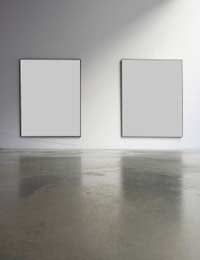Corporate Art Collections

There was a time when the extent of a company’s art collection was a gallery detailing a who’s who of the Board of Directors.
This changed during the 1960s and 1970s, when companies began to recognise the merits of corporate art collections.
Why do Companies Collect Art?
Investing the valuable resources of time and finance into the collection of art seems superfluous to normal business activity.However, several theories and explanations have been offered for corporate art collections.
- Displaying art humanises the workplace and gives the business a context within the normal spheres of human life and activity.
- The values of creating a pleasing atmosphere for their employees speak of corporate integrity to visiting clients and members of the public.
- The art displayed supports and confirms the company’s brand image and corporate identity.
- Art can be a very sound investment. If the premises are redecorated and rebranded, parts of the collection can be sold to generate funds and purchase new works that fit in with the altered interior design.
- Curators of the collections often purchase works from unknown artists in the hope their work will offer investment opportunities that perform well financially.
Special Concerns of Corporate Art
Corporate art collections differ from other art collections because their place within a work environment creates several specific issues and concerns.The works of art:
- Must be appreciated by people constantly passing by and often without the time to stop and appreciate a painting.
- There may be issues regarding company branding and colours or images used within the composition.
- Some companies adhere to the principles of Feng Shui or superstitious practice and the subject of the painting may have to be considered.
- The images portrayed or depicted mustn’t be contentious in any way. For example, great care must be taken if a corporate art collection is to include any nudes.
The JP Morgan Art Collection
This is probably the forerunner of the corporate art collection. In 1959, David Rockefeller started the collection when he was the chairman of the Chase Manhattan Bank. The main body of the collection comprises pictures, sculptures and photography. It also includes various artefacts from around the world and locations where JP Morgan conducts business. The collection proudly loans art to museums and arranges travelling exhibitions. JP Morgan claims, ‘The firm’s longstanding support for art is based on the belief that art significantly enriches the cultural life of the communities where JP Morgan does business.’The Deutsche Bank Collection
This is reputed to be the world’s largest corporate art collection. Founded during the 1970’s, there are 50,000 works of art within the collection. Their long established ‘Art in the Workplace Scheme’ aims to support contemporary art and increase their workforce’s experience of art. Deutsche Bank are pioneers of corporate art in the name of social responsibility, not investment. Their collection is frequently loaned to museums and public institutions.Clifford Chance
Clifford Chance boasts a fine collection of art as well as modern sculpture. They established the ‘Art Club’ a body which oversees the education of their staff, gallery information, private viewings and lectures. They also promote this sponsorship of print-makers and young artists.The Fleming Collection
This is an excellent example of the evolution of a corporate art collection. It is reputed to be the finest collection of Scottish art in a private collection. It was founded in 1968 by a Scottish bank, Flemings, who deemed it appropriate to base their collection on Scottish artists or scenes of a Scottish nature. Their motives for creating the collection were purely philanthropic. In 2000, when the bank was sold, so was the collection. It was placed in the care of the Fleming-Wyfold Art Foundation who opened a gallery in London in 2002.The world of corporate art throws up some interesting facts and surprises. The main motives for the collections appear to be for the philanthropic good of their workforce. It could be argued, that this also brings long term rewards financially. However, the main revelation is that corporate art collections are some of the finest collections in the world.
You might also like...







